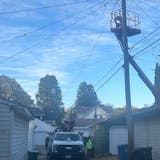•••
In Tuesday's Star Tribune, two letters highlighted the failure of the Minnesota Pollution Control Agency to discover air pollution problems at a Minneapolis foundry ("Excuses galore in foundry dispute," Readers Write). The problem was discovered by the Environmental Protection Agency despite the MPCA's failure. In the same issue of the paper was an article detailing the state Board on Aging's failure to monitor contracts under the Senior Nutrition Program ("Audit faults senior meal program").
Recently the Star Tribune focused on the MPCA and Department of Agriculture's failures to protect groundwater in the karst region of southeastern Minnesota ("EPA says state failed to address polluted well water, demands action," Nov. 9). The Star Tribune has detailed how those responsible for protecting abused children allow children to be returned to abusing parents, often resulting in the child's death ("In harm's way," special report, Nov. 5).
All of these exposures rest on a foundation provided by the Department of Education's abject failures in the Feeding our Future fiasco and failures by the Department of Natural Resources to protect woodlands.
It appears that Minnesota's regulatory process is in the hands and thrall of those who are supposedly regulated instead of the public, which expects protection.
Where is the governor, and where is the Legislature? Our tax dollars should be providing a competent regulatory process, one that works in the public's interest and not in the interest of those regulated.
Floyd Grabiel, Edina

